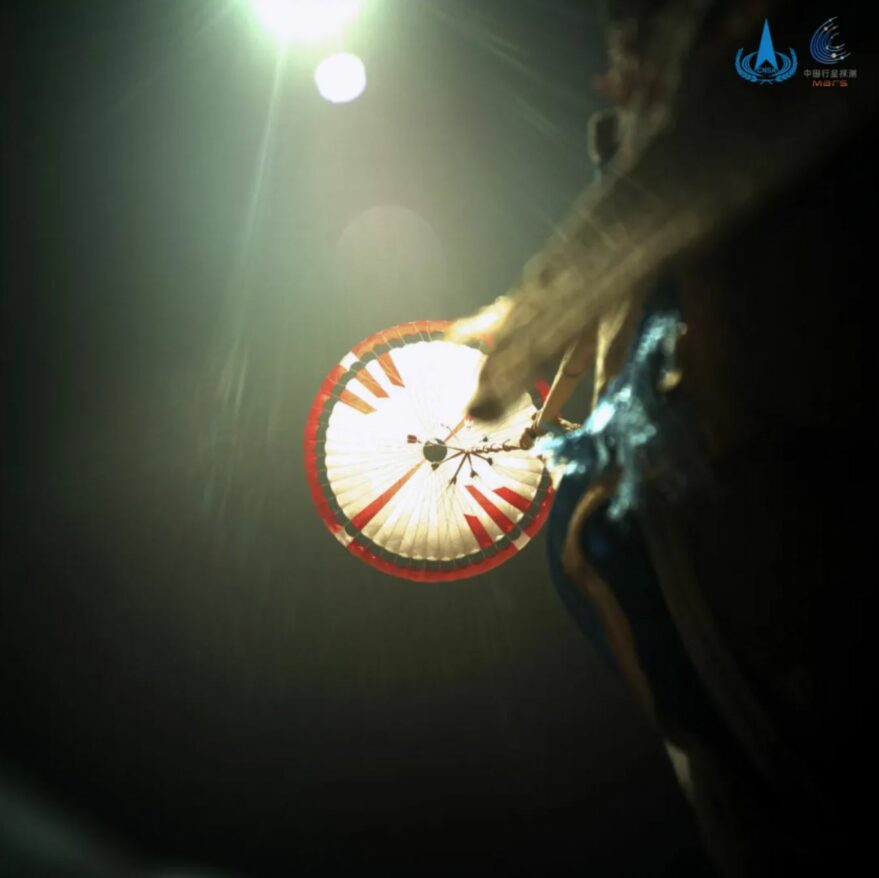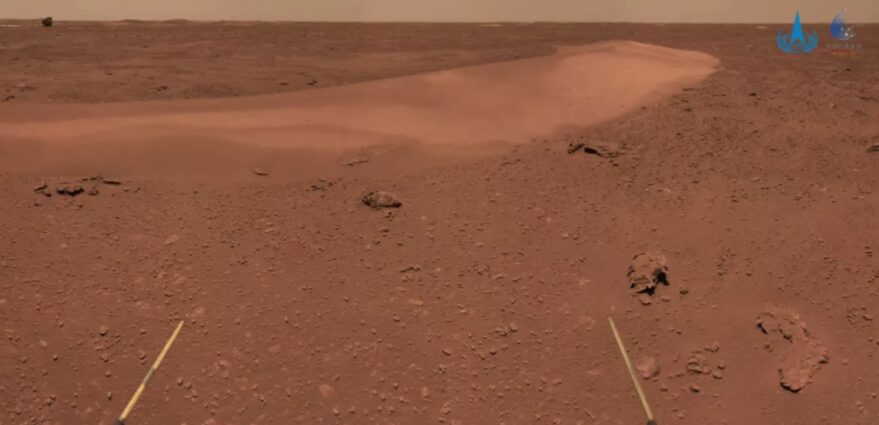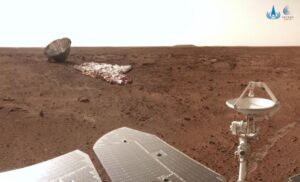The 240-kilogram solar-powered Zhurong captured the image of the discarded items on July 12 Beijing time at a distance of 30 meters away.
Zhurong landed on Mars May 14 after three months in orbit making preparations for its landing attempt.
The rover has now driven 450 meters in Utopia Planitia as of July 15 Beijing time, according to the China Lunar Exploration Program. The parachute and backshell are located around 350 meters south of the rover’s landing platform.
The heat shield from the landing sequence is located hundreds of meters further to the southwest. China has not announced a plan for Zhurong’s drive route. NASA’s Opportunity rover imaged its own heat shield back in December 2004.

Zhurong has been operating for 60 sols and has a primary mission of 90 sols (92 Earth days). It is currently unknown if Zhurong’s mission will be extended beyond this.
China’s Tianwen-1 orbiter—which carried Zhurong and entered Mars orbit Feb. 10—is currently in an 8.2-hour orbit, allowing a pass over Utopia Planitia once per sol to help relay data to Earth across hundreds of millions of kilometers of space.
Zhurong is equipped with six science payloads, including a laser-induced breakdown spectroscopy instrument for analysing surface elements and minerals, panoramic and multispectral imagers, a climate station, magnetometer and a ground-penetrating radar.
Peter Grindrod at the Natural History Museum, London, told SpaceNews early June that orbital images of the immediate landing area show nearby bright, linear features that are probably a type of feature called Transverse Aeolian Ridges (TARs) which would be of interest to scientists. Zhurong visited one of these features June 26 (Sol 42) according to CLEP.
Grindod notes that there are numerous interesting raised mounds in the region, which could be inverted impact craters or possibly small volcanic domes, while some other features could be the result of tectonic activity. Zhurong’s route and ability to access these areas will however depend on science objectives and priorities and the duration of its mission.

Meanwhile China’s Yutu-2 rover is expected to complete its 32nd lunar day July 16 as the sun sets over Von Kármán crater on the lunar far side. The 140-kilogram solar-powered rover has covered 738.6 metres since landing in January 2019.
A Chinese science outreach account noted July 13 that Zhurong has covered ground much more quickly than Yutu-2 due to greater autonomy and ability to negotiate obstacles. Yutu-2 is also required to power down for the deep cold of lunar nights and high solar radiation of lunar noons.



